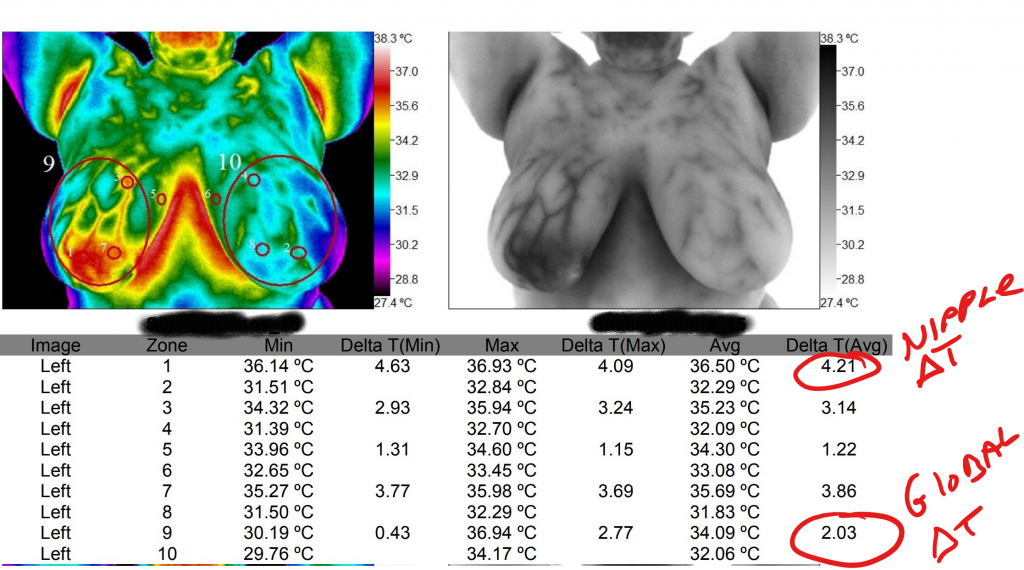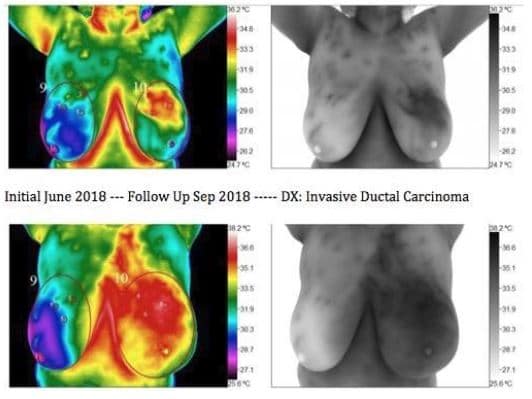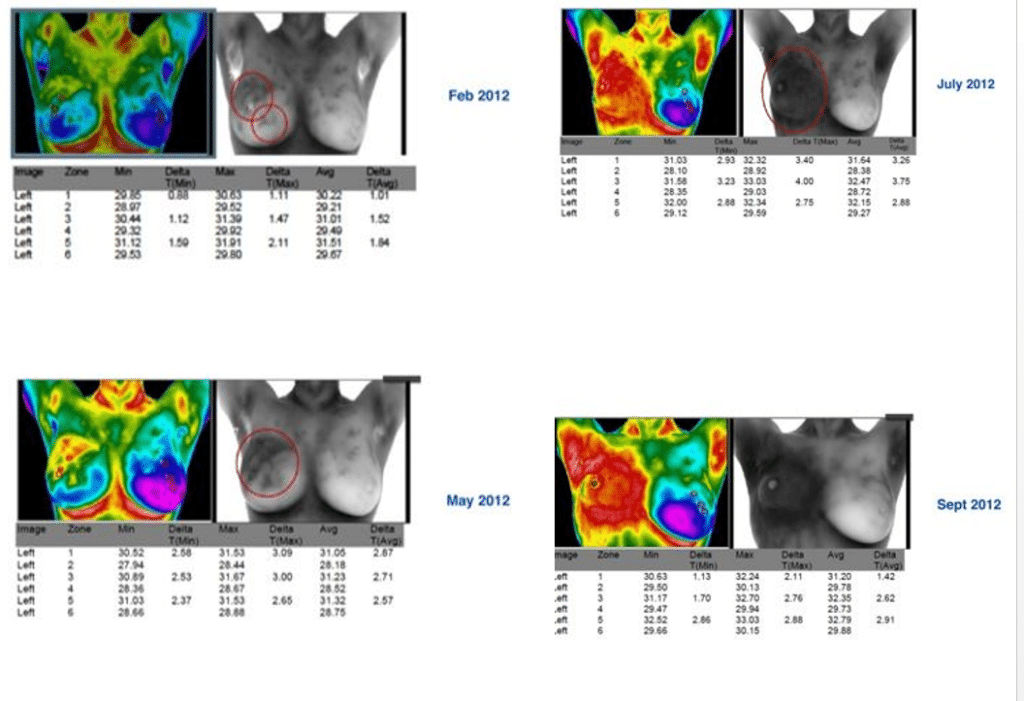This breast thermography case study shows the thermal effect of a 9 cm tumor. The heat can be seen leaching out away from the breast tissue and into the lymphatic region surrounding the breast. Thermography is a great tool for assessing the extent of potential damage from breast cancer.







